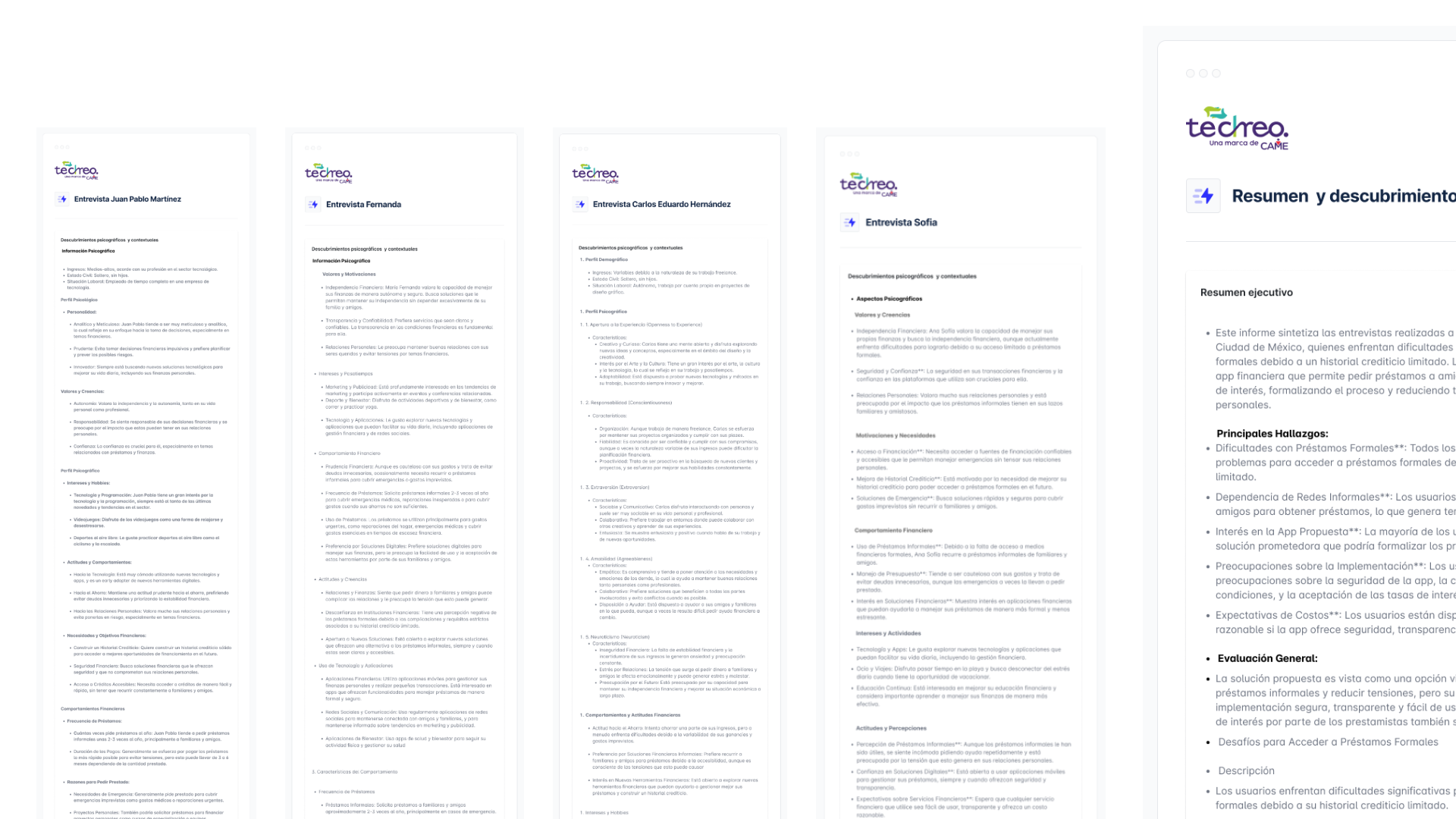Before diving into design solutions, I leveraged the Double Diamond methodology to structure our discovery and definition phases. My first step was a series of workshops and interviews with key stakeholders product owners, business managers, and support leaders. These sessions helped us clarify the big picture:
What are our business goals and desired outcomes?
What problems do we need to solve for both the business and our users?
Where are the main pain points or blockers in the current journey?
What would an ideal solution look like for all parties?
This alignment made it possible to focus our research where it mattered most.
Customer Journey Hypothesis
Rather than limiting our analysis to the in-app experience, I started by mapping the decision-making journey users take before ever downloading Techreo/CAME. The goal was to understand how and why users decide to adopt (or avoid) a digital financial app in the first place.
Mapping Decision Patterns
I segmented potential users into distinct groups, each with different motivations, barriers, and digital behaviors. For each, I created a hypothesis journey mapping their thought process from initial need to app adoption:
Key steps in the decision journey:
Trigger Event:
A financial need arises (e.g., loan required, need for easier money management).
Consideration & Trust:
Weighing pros/cons, checking reviews, or relying on word-of-mouth to assess trust.
Information Search:
Users compare solutions researching online, asking friends/family, or visiting branches.
Decision Point:
Choosing to try Techreo/CAME’s app, stick with another solution, or do nothing.
Decision Point:
Choosing to try Techreo/CAME’s app, stick with another solution, or do nothing.First Interaction: Download, register, or request support.
First Interaction:
Download, register, or request support.




